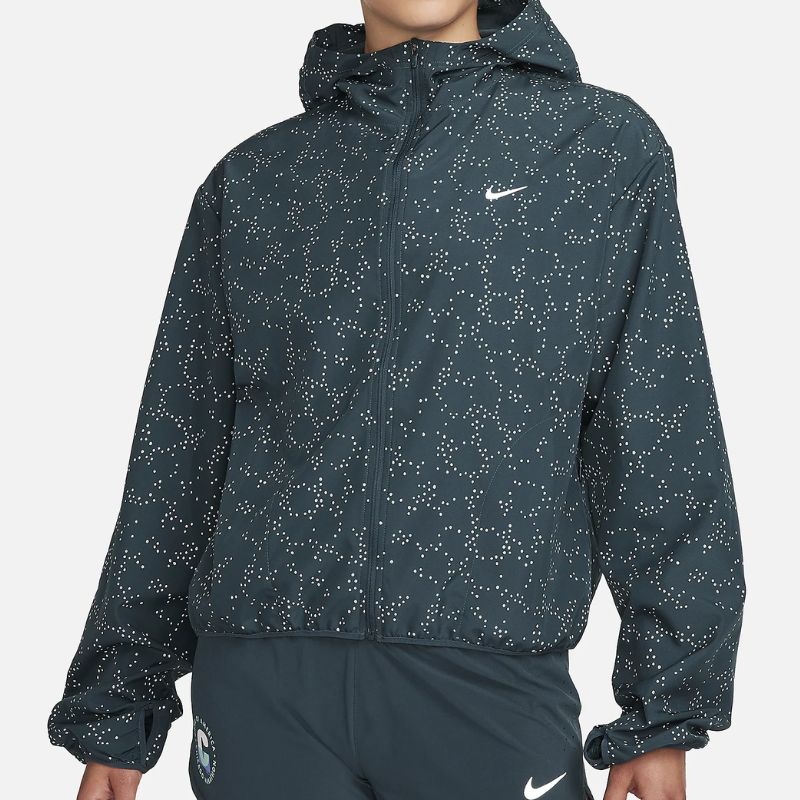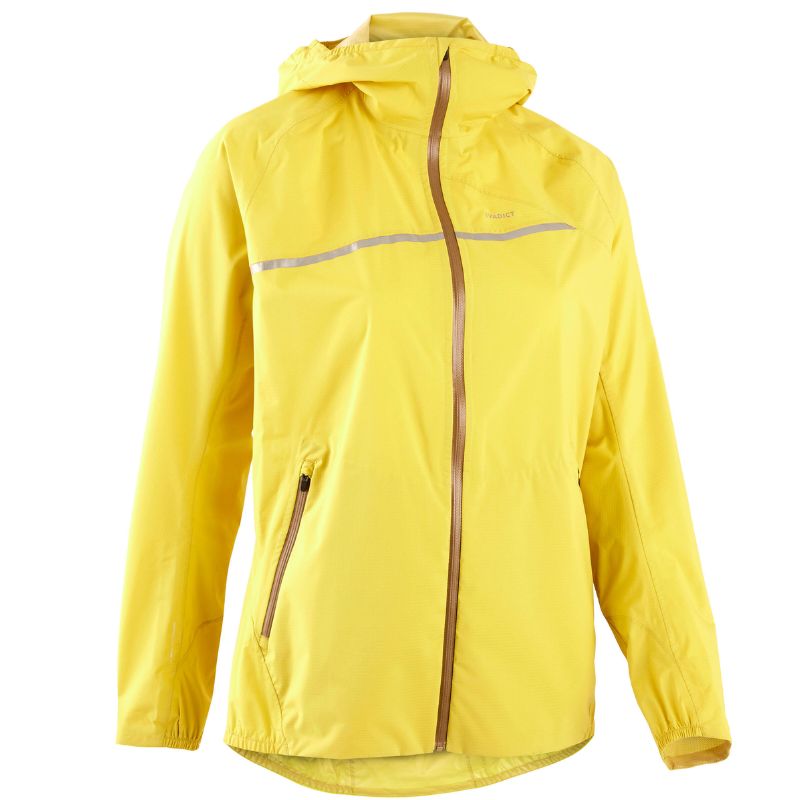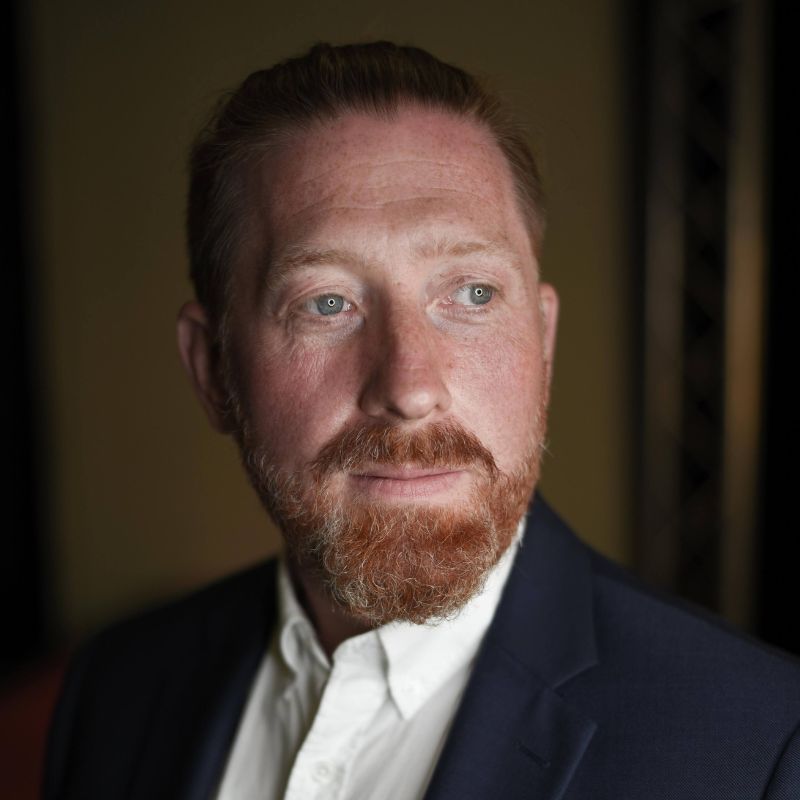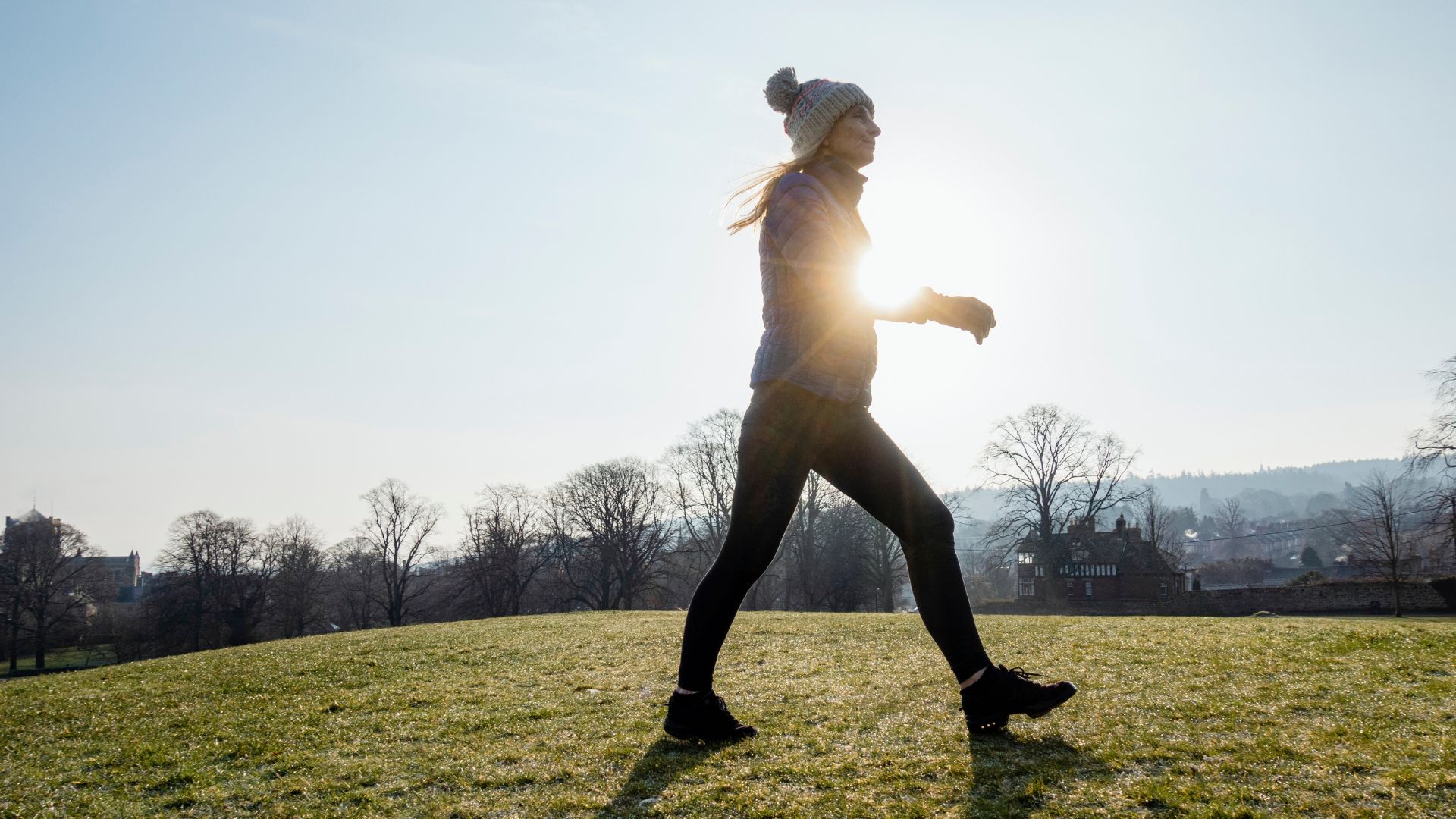How to work out in cold weather - 9 tips for staying motivated as the temperature drops
Fitness experts offer motivational tips to work out in cold weather if you're struggling this year


Many of us struggle to know how to work out in cold weather, with the temperatures dropping and days getting darker as we head into winter. If the change in seasons has you feeling a little despondent in your workout routine, you're certainly not the only one.
While we know how to wake up early in the morning in winter in theory, it becomes a whole different thing when you're laying there, woken up by the alarm clock on a wet and windy morning. And that's not you being lazy - in response to darkness, our brains produce melatonin, the hormone that helps us sleep. When there's limited daylight outside, our brains believe it's still nighttime, signalling to our bodies to stay asleep.
But even later morning times and early evenings come with dark skies in the later seasons. It is possible to pick your workout motivation back up though and learn how to work out in cold weather once again. Here, woman&home speaks to two certified fitness experts to reveal how to do it, what to wear, and more.
How to work out in cold weather
1. Make sure you have waterproof clothing
Along with making sure you know how to keep your feet warm, laying up with clothes is essential when working out in cold weather. "Make sure you dress for the change in the weather with appropriate layers in your wardrobe that breathe. These need to be able to be taken off as you get warm and quickly put back on when you start to cool off," says Martin Sharp, qualified Level 3 Personal Trainer.
If you're exercising outside, clothing also needs to be reflective - both for your safety and the safety of others. "Make sure you wear reflective clothing so it can be easily seen, especially if exercising near a road," he adds. Luckily, much of the high-quality reflective clothing out there is made for colder seasons anyway.

The newly-released Nike Dri-Fit Women's Running Jacket is made from super-smooth and sweat-wicking fabric so it's perfect for running, and the all-over reflective print is a fashionable but practical addition that keeps you seen. There are secure pockets for your essentials and pull-cord hood for those chillier days.

For those who love cycling as a workout, waterproof and high-vis clothing is so important. Rapha's Commuter Jacket is made of hard-wearing, yet lightweight material, and it's ideal for fending off wind and rain while riding. The bright pink will be best for busy roads but each colourway has a reflective panel at the back.

Lightweight and waterproof thanks to premium materials and fully tapered seams, the Decathlon Women's Trail Running jacket is a cheaper potential addition to your fitness kit this winter. It's packable, making it easy to store, and suitable for even the longest workouts in wet conditions with a 10,000 Schmerbers rating. Plus, you'll be visible the whole time thanks to the bright yellow colourway.

Martin Sharp is a multi-award-winning personal trainer, fitness coach and founder of Sharp Fit For Life. He is also a speaker, author and international consultant who helps busy and overweight entrepreneurs, consultants and business owners obtain the fitness and lifestyle that makes them happier, more confident and with the flexibility to continue to be at their best.
2. Get a workout buddy
A workout buddy can help you stay motivated at any time of the year but in colder seasons, a friend can be the difference between skipping exercise altogether or having your workout be an enjoyable, new way to catch up.
"A friend can help motivate you to achieve your fitness goals and empower you to try new workouts together," Sharp says. "Fostering positive social relationships from those who are supportive and encouraging of our intrinsic goals not only helps to keep us accountable but creates a sense of camaraderie to help build confidence and mental willpower to persevere."
Sign up for the woman&home newsletter
Sign up to our free daily email for the latest royal and entertainment news, interesting opinion, expert advice on styling and beauty trends, and no-nonsense guides to the health and wellness questions you want answered.
While we all need time to relax with friends and family away from exercise, taking your catch-ups on a workout can make this easier too. "Swap coffee dates with studio dates, and you’ll achieve your fitness goals while also getting in some much-needed quality time," he adds.

3. Find a new goal
It could be a new running distance (most people start training for a marathon in winter), a personal goal you've always wanted to achieve, or a desire to try something new for the first time - having a goal is a sure-fire way to get you moving when as the days get shorter.
"Having something to train for and hold yourself accountable to will help you stay motivated in to work out in winter even when you're not feeling it," says Sharp. "Looking ahead to the spring and summertime, you'll be able to be proud of your achievements looking back if you work hard for them now."
4. Try something new
As noted, setting a new goal could mean setting yourself a new distance or another numerical goal, but it may also mean trying something new. "If you're already struggling with motivation, you may lose it even more if you're bored doing the same time of training over and over again. Changing your training styles can be a great way to rebuild your interest in exercise and your motivation to keep moving," says Sharp.
That could mean swapping classic strength training for Pilates for strength training to work on your balance and posture or graduating from walking to running. If you're looking for ideas, speak to your friends and family to find out what they do. Or, try out one of the best fitness apps if you're more into home workouts when it's colder outside.
5. Try working out in the morning
As everyone is different, there's no real best time to exercise during the day. However, if there was, then it would almost certainly be the morning.
Working out in the morning has loads of health benefits. For example, a study by the University of Western Australia found that exercise in the morning tends to improve our attention span and decision-making skills for the day. Another one from Appalachian State University found that we tend to go into a deeper sleep and sleep better if we exercise in the morning - just make sure you don't exercise on an empty stomach.
Getting up and out early could also help you keep up the routine of working out, regardless of the season. "It's easy to get distracted by work or plans with family and friends in the evenings, so having your workouts at night might mean you end up not doing them at all, which could leave you feeling frustrated," says the personal trainer.
"It's all about what works best for you but prioritising your workout first thing in the morning means you have less chance of putting it off," he says. "It can also set the tone for the day ahead and put you in a more positive mood."

6. Prep everything in advance
It's funny how off-putting the tiniest difficulties, like pulling out your workout clothes, can be on a cold morning. To make things easier for yourself, Sharp suggests removing those hurdles before they come up.
"Lay out your clothes for the workout the night before. Fill up your water bottle and pack yourself some post-workout snacks that you actually want to eat. Getting rid of all the tiny difficult tasks might help reduce the chances of you ditching the workout at the last minute."
7. Modify your workouts
With motivation at an all-time low, it makes sense to scale back your routine if you want to work out in winter. If you try and push yourself hard when you just don't want to exercise, you'll just stop entirely eventually.
"Scaling exercises to optimize technique or intensity is a crucial part of functional, smart training," says Scott Thomson, a certified personal trainer and global athletics director at F45 training. "Not only does this put us in a position of control to boost our motivation, but it also keeps us mentally engaged and intrinsically focused to master the technique before progression."
It's perfectly fine to take things back a step and do an easier version of your normal routine before working your way up again. This could mean swapping out your runs for walking as a workout or doing yoga every day in your living room instead of hitting the gym three times a week.
"We all start somewhere when it comes to fitness and the only way to move forward is to keep moving," he adds.

Scott Thompson is a certified personal trainer and the global athletics director at F45, a functional training program that combines cardio with resistance-based strength training, or a hybrid of all three.

8. Set yourself a 2-month challenge
Leading research from University College London suggests that it takes 10 weeks to build a habit, working out to just over two months. This winter, if you're really struggling to stay motivated, take it one day at a time and find motivation for two months. It may sound like a lot, but we all know how fast time flies.
Once you've got past the two-month phase, you'll be out the other side of your motivational slump - and spring will almost be here. "You may not be motivated every day but staying disciplined can help you achieve your goals one step at a time," Thompson says. "Creating a routine can be tough or daunting at times, but in order to maintain a healthy lifestyle, it is important to keep consistent with your workouts and healthy choices."
9. Schedule your workouts
One great way to make sure you hit that 2-month mark is scheduling your workouts. The trainers suggest blocking a time out in your calendar (you could always try one of the best time management apps if you struggle to do this), making sure your workplace and family know you'll be busy during this time, and relying on yourself to keep the appoint just like you would anything else.
"Book into a class or studio session on the regular as external motivation can be an incredibly useful kickstarter at times," suggests Sharp. "If you don’t have access to an external fitness class, make yourself an appointment to work out or be active for a specific time of the day. You don’t skip an appointment at the doctor’s so why would you skip an appointment to work on your own health?"
Why is exercising in cold weather hard?
Finding the motivation to work out in cold weather is difficult for several reasons but the main one is the impact of darker evenings and mornings on the brain. As research from Baker Heart Research Institute explains, the rate of serotonin (aka 'happy' hormone) production is directly related to how much sunlight we get and the less we get in winter, the lower our levels of serotonin. When this happens, it often causes what's known as the 'winter blues' or, in more extreme cases, seasonal affective disorder (SAD) symptoms.
We naturally want to sleep more in the colder seasons as well, since the reduction in sun exposure dramatically impacts our circadian rhythm, according to research by New York University, causing our bodies to produce more melatonin - the sleep hormone.
As much as exercise can help us learn how to stop feeling sad, there are physical barriers that make exercise harder in autumn and winter, too. Runners and walkers tend to experience more joint pain as these seize up in the colder weather, while roads or trails tend to be slippier.
We also often underestimate our body's response to cold weather. For example, many people don't drink as much water in the colder seasons, explains Sharp. "Even though you may not sweat as much as in the summer months, you'll still experience fluid loss so remember to drink plenty of fluids to stay hydrated," he says.
If there's a chill in the air, it's also harder to breathe. "When it is very cold the chill can put a strain on your lungs, which is further exasperated if you are exerting yourself," he explains.

Grace Walsh is woman&home's Health Channel Editor, working across the areas of fitness, nutrition, sleep, mental health, relationships, and sex. She is also a qualified fitness instructor. In 2025, she will be taking on her third marathon in Brighton, completing her first ultra marathon, and qualifying as a certified personal trainer and nutrition coach.
A digital journalist with over seven years experience as a writer and editor for UK publications, Grace has covered (almost) everything in the world of health and wellbeing with bylines in Cosmopolitan, Red, The i Paper, GoodtoKnow, and more.
-
 Le Creuset has taken the gold standard literally — their 100 year launch features real gold and an iconic designer collaboration
Le Creuset has taken the gold standard literally — their 100 year launch features real gold and an iconic designer collaborationLe Creuset have turned 100 years old and to celebrate they have launched a new colour — Flamme Dorée — as well as a coffee table book with designers Assouline
By Laura Honey Published
-
 This chic, Brazillian perfume brand is our beauty team's secret to smelling expensive and unique
This chic, Brazillian perfume brand is our beauty team's secret to smelling expensive and uniqueFrom salty accords to modern twists on tuberose, there's a Granado perfume for every preference - but these 9 blends have our heart...
By Naomi Jamieson Published